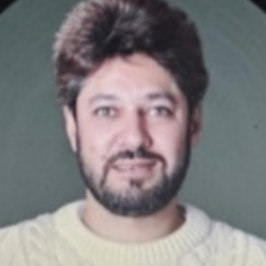
Naeem Maroof
Work place: Electrical & Electronic Engineering Department, College of Engineering, University of Jeddah, Asfan Road, Jeddah, Makkah 23890, Saudi Arabia
E-mail: nmaroof@uj.edu.sa
Website:
Research Interests:
Biography
Naeem Maroof (S’14–M’16) received the B.Sc. degree in computer engineering from CUI Pakistan in 2006, the M.Sc. degree in electronic communications and computer engineering from the University of Nottingham UK in 2007, and the Ph.D. degree in electronics engineering from Hanyang University South Korea in 2016. He was a postdoc fellow from 2016 to 2017 at SKKU South Korea and CMU USA. From 2017 to 2018, he was working at KFUEIT Pakistan. He is working as an Assistant Professor at the University of Jeddah Saudi Arabia since 2018. His research interests are low power & reliable integrated circuit design, memory architectures, power management ICs and post-CMOS computing.
Author Articles
Evaluation of WATERMARK Channel for Underwater Communication using Dual Tree Complex Wavelet Transform based Orthogonal Frequency Division Multiplexing Model
By Girish Nanjareddy Veena M. Boregowda Naeem Maroof
DOI: https://doi.org/10.5815/ijcnis.2023.06.02, Pub. Date: 8 Dec. 2023
Underwater communication is one of the important research areas which involves design and development of communication systems that can demonstrate high data rate and low Bit Error Rate (BER). In this work three different modulation schemes are compared for their performances in terms of BER and Peak to Average Power Ratio (PAPR). The realistic channel model called WATERMARK is used as a benchmark to evaluate channel performances. The mathematical model is developed in MATLAB and channel environments such as Norway Oslo fjord (NOF1), Norway Continental Shelf (NCS1), Brest Commercial Harbour (BCH1), Kauai (KAU1, KAU2) are considered for modelling different underwater channels. The data symbols are modulated using Dual Tree Complex Wavelet Transform (DTCWT) Orthogonal Frequency Division Multiplexing (OFDM) model to generate multi subcarriers and are demodulated at the receiver considering underwater channel environments. The BER results are evaluated for channel depth less than 10m and 10-50m. An improvement of 2x10-2 in terms of BER is observed when compared with Fast Fourier Transform (FFT) based OFDM model.
[...] Read more.Other Articles
Subscribe to receive issue release notifications and newsletters from MECS Press journals